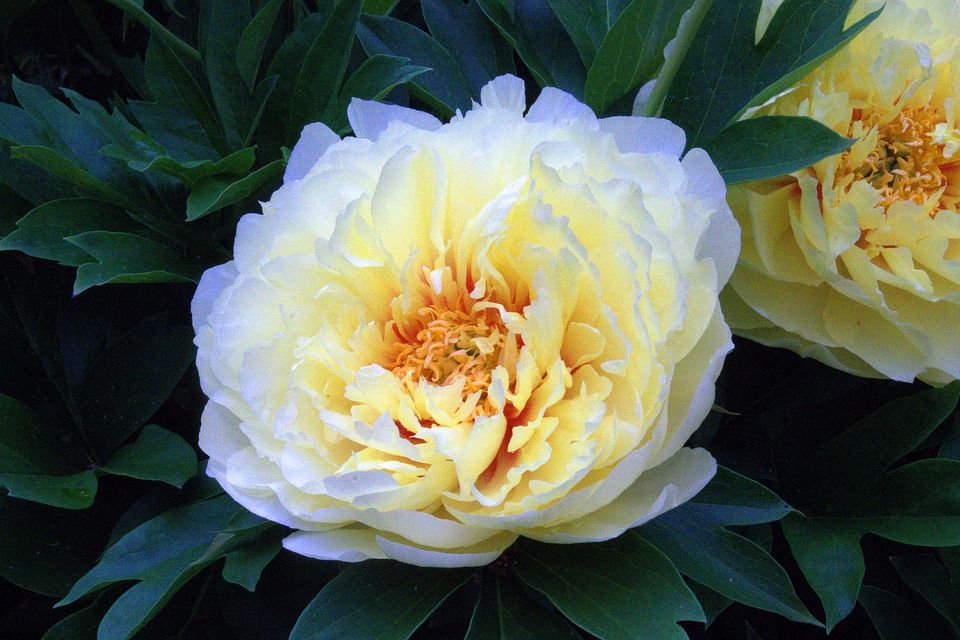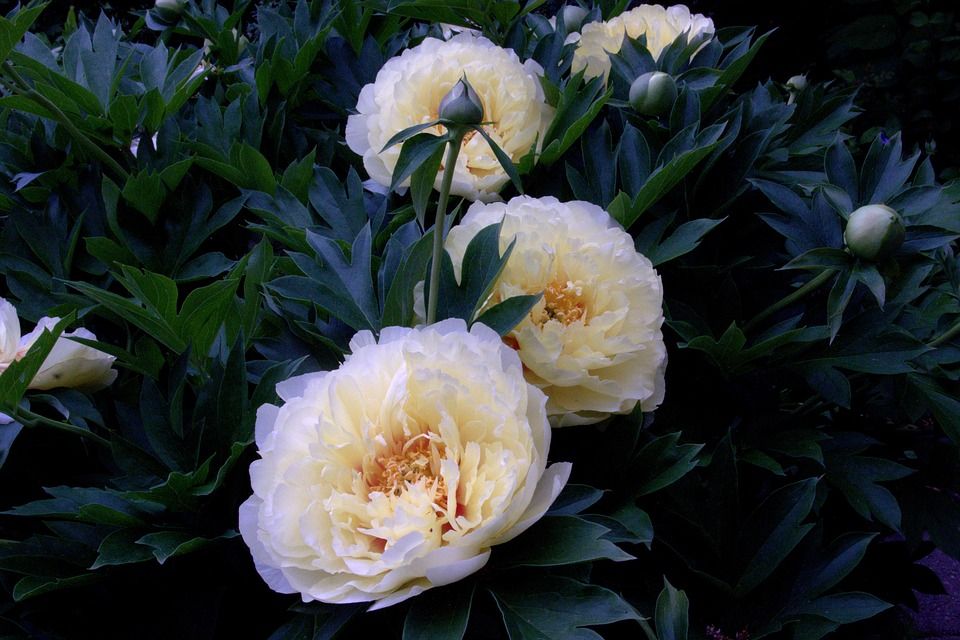Itoh Peony Care: How to Plant and Grow the Paeonia Bartzella Peony
When it comes to peonies, nothing makes a lasting statement in your garden or living area like the Itoh Peony. It blooms in the spring and their blooms make a good impression with the vivid colors and lush foliage. In fact, there’s a lot you can do with this hybrid peony from growing it in a perennial border to mixing it with other shrubs.
Peonies come in two types, as trees, and as herbaceous plants. Itoh Peonies are the result you get when mixing both species. Why do you want to do that? Because the new hybrid has the best of both worlds. It’s a sturdy plant with a solid stem and rich foliage with luxurious blooms that crown its graceful bush. It’s no wonder you can do so much with the Itoh Peony whether as a stand-alone plant or in groups or even hedges.
Best Itoh Peony Varieties for your Garden
As with all hybrids, you make one, you make many. People always demand new species with better blooms, deeper colors, and more compact designs to fit in just about any space. This is where Itoh Peony comes in. With so many hybrids, you might be at a loss to choose the one that fits within your landscaping purposes, space, and designs. So we compiled this list to help you decide.
- Paeonia lactiflora Angel Cheeks: A herbaceous peony that grows to a modest height of 20 inches which makes it ideal for small spaces. Flowers bloom in May and June of every year and have a striking pinkish color.
- Paeonia Mrs William Kelway: a peony tree that doesn’t exceed 40 inches at full maturity. It flowers in late spring and early summer. The flowers are white as snow and last for a few weeks.
- Paeonia Sarah Bernhardt: One of the few herbaceous peonies that have a strong fragrance. Named after the famous theatre actress, this peony is about 30 inches at full growth and grows double pink flowers in June.
- Paeonia Souvenir de Maxine Cornu: This tree peony has double flowers that appear in late May or early June and come in two colors, either orange or yellow. Both colors are ravishing in any setting since the flowers tend to hang downwards so you need to keep the peonies on an elevated ledge.
- Paeonia Bowl of Beauty: If you prefer to have your peonies in two colors instead of single color blocks, then this aptly named peony is the one for you. The petals are pink on the outside with shades of lemon on the inside. The maximum height of the tree when mature is about 30 inches.
How to Grow Itoh Peonies
The unabashed peonies like to flaunt their beauty out in the open sun. For them to show their best features in terms of foliage and flowering, they need a moist yet well-drained soil and plenty of sunlight. And since they’re not cheap to come by (most hybrid peonies are really expensive), you need to splurge a little when it comes to soil and fertilizers.
How to plant Itoh Peonies?
If you’re planting a herbaceous peony, then make sure the soil is slightly alkaline or at least neutral. They don’t grow well in acidic soil. So check the soil and get a good pH reading. Mix the soil with bark or peat moss to make it less acidic. Tree peonies on the other hand can handle different soil types including slightly acidic as well as alkaline soil.
When to plant Itoh Peonies?
The best time to plant peonies is in September. That’s long after their bloom season. You can also plant them in the early spring right after the last frost. Most peonies have long and deep roots. Make sure to plant them immediately and not expose the bare roots to the air for too long, else the plant will die.
Mix in organic matter to neutralize the soil and add a well-balanced fertilizer then water the peony immediately after planting it.
Keep the soil moist but not overwatered since that’s a cause for many plant failures. Keep a plant support nearby and install it near the peony right before the first flowers appear. The blooms are often heavy and the branches can’t support them on their own.
Care for Itoh Peony
Since you made the decision to invest in the Itoh Peony, that means you won’t save time nor effort to make it grow and blossom. Whether it’s keeping the plants healthy, fending off pests, or ensuring they get enough water and nutrition, work with peonies is often demanding, yet very rewarding.
Location
Before you plant the peony, you need to choose its location very carefully. This is the kind of plant that can live up to 50 years, longer than the common house pet. So the place you choose for the plant needs to be sunny, has plenty of ventilation, and not exposed to pollutants. It’s better that you don’t move the peony after it establishes roots.
Don’t plant the peony near other plants that compete over food or water. Also, avoid any climbing plants that could suffocate the peony and cut off its air supply. The location should have enough space to accommodate the diminutive peony. A crowded space will not allow it to spread its bushy foliage and grow the radiant blooms.
Year-Round Care
Unlike other annuals, peonies need attention and care all year round. Even during the winter months when they go into dormancy, you need to check on them regularly to make sure pests or infections haven’t taken root in the plants.
During the spring months when the buds make their first appearance make your rounds to collect any dead flowers as well as the sick or fallen leaves. This is also the time to increase your fertilizer doses, about once every other watering. Or you could use a slow release fertilizer once a year during the early spring.
In the dog days of the summer when the heat reaches its peak, make sure the soil doesn’t go dry. Use a thin stick to check the soil below the surface. It should be wet or at least moist during the summer. Water the plant once or twice a week according to its needs. Don’t water every day since it leads to waterlogging.
After the last flowers have faded away and the plant’s growing cycle is over around the middle to late fall, that’s when you do your pruning. Remove the top 4 inches off the plant’s growth and get rid of it. This encourages the plant to grow lateral branches and develop a shapely dome come next spring.
Make sure to remove any late buds that appear around this time. They won’t develop into full blooms since the winter months are closing in and would have an adverse effect on the plant’s growth and foliage.
For peony trees, remove all branches closest to the ground. It’s safe to clip away all offshoots that are 4 inches or lower to the ground. By removing the top 4 inches as well as the lowest branches you prepare the peony for the spring with a clean dome-like shape.
Infections and Diseases
While most hybrids are doubly exposed to diseases they inherit from the various species combined to make them, hybrid peonies are an exception. They are sturdy plants that are naturally immune to most diseases that plague their purebred cousins.
However, fungus infections are the bane of hybrid peonies and you should take this disease seriously. Botrytis is the main cause of these fungal infections. Check the leaves, flowers, and shoots for any signs of the disease. Remove the infected parts as soon as you see them and burn them or dispose of them safely.
You can apply a fungicide if the infection is widespread and you fear it would reach other plants nearby. Don’t forget to wipe the cutting tools with rubbing alcohol.
Pests
Unlike other peonies especially herbaceous peonies that produce sap that attracts insects, hybrid peonies have nothing to offer to bugs. Except for course, ants that crawl all over the leaves and flowers.
While ants are technically not pests, they still swarm the plant and cover the pretty blooms. You don’t have to do anything about the ants as they don’t pose any danger to the peony. They don’t eat the flowers or even the leaves. Most likely they’re drawn there by the smell or hope to find droplets of water on the leaves.
If you don’t like to have ants all over your hybrid peonies you can use an insecticide to get rid of them, although that’s often not necessary.

